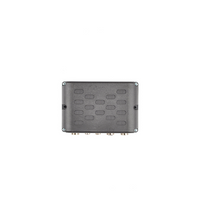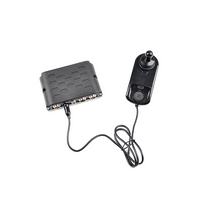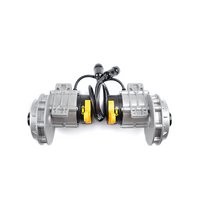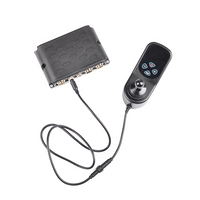- Home
-
- TF Integrated Workstation
- TT Integrated Station
- TS Single-Person Station
- TO Single-Person Station
- Advanced Office Table
- Manager Table
- Odette Conference Table
- Lifting White Board
- Lifting Podium
- Working Port
- Zen Standing Desk
- Lifting Coffee Table
- Home Standing Desk
- Nature Standing Desk
- Invictus Gaming Desk
- Study Desk
-
-
- Electric Hospital Bed
- Image Equipment
- Examination Bed/Clinic Bed
- Operation Table and Chair
- Infant Incubator
- Independent Weighing System
- Home Care Bed
- Patient Lift
- Wheelchair
- Toilet Lift
- Bath Lift
- Shower Trolley
- Smart Rollator Walker
- Ophthalmic Workstation
- Treatment Chair
- Facial Chair
- Traction Table
- Massage Chair
- OT Training Equipment
- Stand-up Application
- Rehabilitation Robot
-
-
- Photovoltaic Application
- Photothermal Application
- Energy Storage Container
- Tractor
- Seeder
- Fertilizer Spreader
- Harvester
- Rotary Cultivator
- Climate Control System
- Automatic Feeding System
- Excavator
- High Altitude Work Platform
- Garbage Truck
- Street Sweeper
- AMR Automated Guided Vehicle (AGV) and Autonomous Mobile Robot (AMR)
- Forklift Accessories
- Palletizing Collaborative Robots
- Packaging Machine
-
-
Wheelchair Systems Working Principle and Guide
Views: 0 Author: Site Editor Publish Time: 2024-02-22 Origin: Site
What is a Wheelchair Docking System?
A wheelchair docking system is a mechanism designed to securely fasten a wheelchair or mobility scooter inside a vehicle for safe transportation. This system typically consists of docking hardware installed in the vehicle and a corresponding docking device attached to the wheelchair or scooter.
The docking hardware installed in the vehicle usually includes a docking base or docking station, which is securely bolted or mounted to the floor of the vehicle. It may also include a locking mechanism controlled by a remote or manual operation.
The docking device attached to the wheelchair or scooter is designed to interface with the docking hardware in the vehicle. It typically features a receiver or docking pin that aligns with the docking base in the vehicle, allowing the wheelchair or scooter to be easily hacked and locked into place.
Once the wheelchair or scooter is properly docked, the locking mechanism engages to secure it firmly in position, preventing movement during transit. This ensures the safety of the passenger and maintains stability during acceleration, deceleration, and turns.
Wheelchair docking systems are commonly used in accessible vehicles, such as vans and buses, to provide wheelchair users with a convenient and secure means of transportation. They offer greater independence and mobility for individuals with disabilities, allowing them to travel safely and comfortably to their desired destinations.
What are Wheelchair Tie Down Systems?
Wheelchair tie-down systems are devices used to secure a wheelchair or mobility device in place within a vehicle to prevent it from moving during transportation. These systems are essential for ensuring the safety of wheelchair users and passengers while traveling in vehicles.
Here's how wheelchair tie-down systems typically work:
Anchor Points: The vehicle is equipped with anchor points, which are typically installed on the floor, walls, or seats. These anchor points serve as attachment points for securing the wheelchair.
Tie-Down Straps: Tie-down straps are used to connect the wheelchair to the anchor points in the vehicle. These straps are typically made of durable materials such as nylon or polyester and feature adjustable lengths to accommodate different wheelchair sizes and configurations.
Retractors: Retractors are mechanical devices that automatically retract and tension the tie-down straps to secure the wheelchair in place. They are usually installed near the anchor points and feature mechanisms that allow for easy adjustment and locking of the straps.
Wheelchair Restraints: In addition to securing the wheelchair frame, wheelchair tie-down systems may also include restraints specifically designed to secure the wheelchair's wheels. These restraints prevent the wheelchair from moving or rolling during transit, enhancing stability and safety.
Usage: To use a wheelchair tie-down system, the wheelchair user or caregiver positions the wheelchair over the anchor points in the vehicle and attaches the tie-down straps to the wheelchair frame and wheels. The retractors are then activated to tension the straps and secure the wheelchair firmly in place.
Wheelchair tie-down systems are commonly used in accessible vehicles, including vans, buses, and paratransit vehicles, to safely transport wheelchair users and their mobility devices. These systems provide peace of mind for wheelchair users and caregivers by ensuring that the wheelchair remains securely anchored and stable throughout the journey.

What is a Wheelchair Restraint System?
Wheelchair restraint systems are specialized mechanisms designed to secure wheelchairs or mobility devices in place within vehicles, ensuring stability and safety during transportation. These systems are essential for preventing movement or displacement of wheelchairs, thereby reducing the risk of accidents and injuries.
There are several components that make up a wheelchair restraint system:
Anchor Points: Anchor points are fixed locations within the vehicle where the wheelchair restraints attach. These anchor points are strategically placed to provide optimal stability and support for the wheelchair during transit. Common anchor points include floor-mounted brackets or rails, as well as wall-mounted or ceiling-mounted fixtures.
Tie-Down Straps: Tie-down straps are used to secure the wheelchair to the anchor points within the vehicle. These straps are typically made of durable materials such as nylon or polyester and feature adjustable lengths to accommodate different wheelchair sizes and configurations. They may be equipped with tensioning mechanisms to ensure a snug and secure fit.
Retractors: Retractors are mechanical devices that automatically retract and tension the tie-down straps, making it easier to secure the wheelchair in place. These retractors are typically installed near the anchor points and feature mechanisms that allow for easy adjustment and locking of the straps.
Wheelchair Restraints: In addition to securing the wheelchair frame, wheelchair restraint systems may also include restraints specifically designed to secure the wheelchair's wheels. These restraints prevent the wheelchair from moving or rolling during transit, further enhancing stability and safety.
By effectively immobilizing the wheelchair within the vehicle, wheelchair restraint systems provide peace of mind for wheelchair users and caregivers, ensuring a safe and comfortable travel experience. These systems are commonly used in accessible vehicles such as vans, buses, and paratransit vehicles, as well as in private vehicles equipped with wheelchair-accessible modifications.
About JIECANG Wheelchair Systems
JIECANG Wheelchair Systems represent a pinnacle of innovation and reliability in the field of mobility solutions. Engineered with a focus on user comfort, safety, and accessibility, JIECANG offers a diverse range of wheelchair systems tailored to meet the unique needs of individuals with mobility challenges. From manual and power wheelchairs to hybrid models and specialized accessories, JIECANG's comprehensive lineup ensures that users can find the perfect mobility solution to suit their lifestyle and preferences. With a commitment to quality craftsmanship, cutting-edge technology, and customer satisfaction, JIECANG Wheelchair Systems empower individuals to navigate the world with confidence and independence, opening up new possibilities for mobility and freedom.
Related Articles
QUICK LINKS























